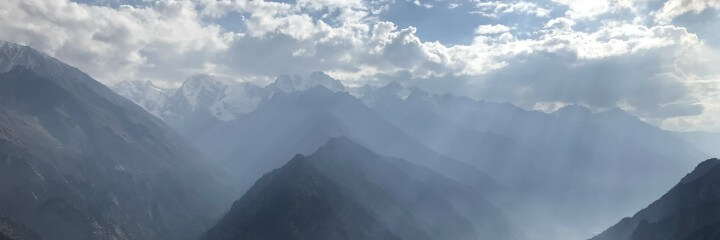So, if you are reading this article right now, you probably found it on Google by searching something like “Travel North Caucasus” or “Tourism North Caucasus”. So, you at least know something about the region, and were actively seeking information about travel here. But, let’s be honest, how many people actually know where the North Caucasus is or even what it is?
Even for those who have heard the words “North Caucasus” in the news or another context, this region tends to evoke 2 basic reactions from people:
a) A Blank Stare – “Where is that? What is that?” Most people have never heard of this part of the world and therefore have nothing to say about it, and no context in which to understand it, especially its history and culture. They might even be hard-pressed to locate the North Caucasus on a map.
b) Fear & Uncertainty – “Isn’t it dangerous to go there?” Others remember something about a war in the 1990s and early 2000s, or some event in the news from 10 years ago, and have already made up their minds that it’s a dangerous place.
Unfortunately, around the world, the North Caucasus has been riddled with outdated, unfair, and untrue stereotypes. Can you indulge us to paint a fuller, more accurate picture of this fascinating region? Because, like any part of the world, the people of the North Caucasus deserve to be known beyond what the news reports about them. We present to you, your travel guide to the North Caucasus Mountains of Russia.
1. IT’S IN RUSSIA
Let’s start with WHERE is the North Caucasus. The Caucasus Mountain range is in the far southwestern corner of Russia, stretching west to east from the Black Sea to the Caspian Sea. The southern border connects to the “South Caucasus” or “Trans-Caucasus”: Georgia, Azerbaijan, and Armenia. For most of the 20th century, it was one “Caucasus” region within the Soviet Union.
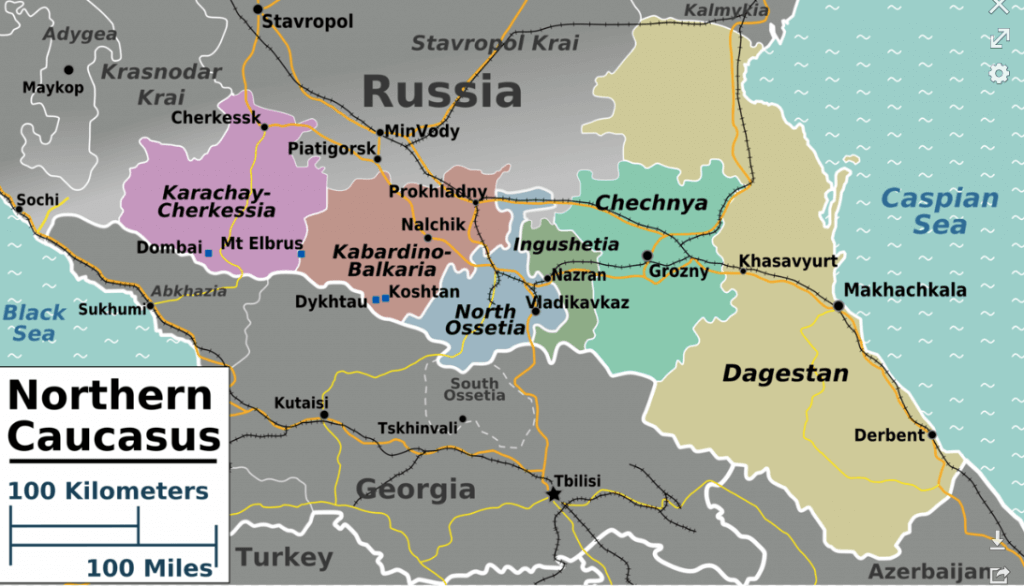
The North Caucasus Mountains cover nine territories/states of Russia’s far South. You may have heard of several of them. From West to East, they are:
1) The Black Sea, or Krasnodar, region – The North Caucasus Mountains literally start at the shore of the Black Sea, most notably around Sochi, host of the 2014 Winter Olympics and a 2018 World Cup host city. Sochi’s ski slopes and accommodations are comparable to what you would find in the Swiss Alps, and domestic and international ski events are hosted here annually. The Black Sea is THE beach destination for most Russians, so this is an extremely popular holiday spot in Russia.
2) Adygea – Although not “officially” considered a part of the North Caucasus, the southern part of Adygea covers the mountains and is the historic homeland of the Circassians, one of many Caucasus nations. Despite its’ portion of the Caucasus Mountains being “gentler” and not as sharp as some of the jagged peaks of the Eastern republics, Adygea’s portion of the Caucasus Nature Reserve is renowned throughout Russia, including the famous Lago-Naki Plateau.
3) Karachay-Cherkessia – Home to two of the North Caucasus’ destination ski resorts, Dombay and Arkhyz. Dombay is one of Russia’s oldest, most well-known ski resorts, and Arkhyz is getting rave reviews these days for its more modern infrastructure. It’s here where the cultural diversity of the North Caucasus starts taking shape: besides Russian, 4 of the over 35 distinct Caucasus languages are spoken here, and native to this republic!
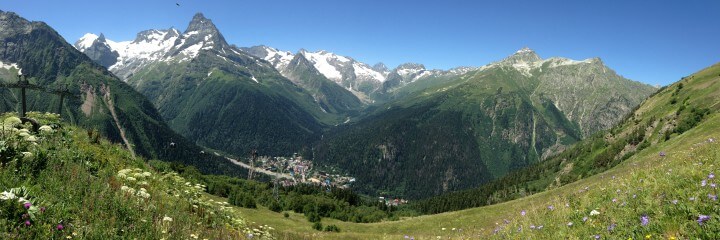
4) Mineral Waters Region – Part of the Stavropol region, this cluster of resort towns is famous for its natural mineral water springs and health spas. These towns include Pyatigorsk, Kislovodsk, Yessentuki, and Zheleznovodsk. Famous Russian poet Mikhail Lermontov spent lots of time writing about the North Caucasus from the Mineral Waters region. With the exception of Dagestan, most Caucasus destinations are accessible from this region by day-trip, so it’s a great spot to camp out at and visit different republics from!
5) Kabardino-Balkaria – A stunning republic made up of 5 parallel mountain valleys, each full of waterfalls, giant rock faces, and plentiful trekking opportunities. Kabardino-Balkaria is home to Mt. Elbrus, the highest mountain in Europe. Elbrus is one of the world’s 7 summits, a sort of mecca for mountain climbers. There are also top-notch paragliding and horseback riding opportunities in this republic.
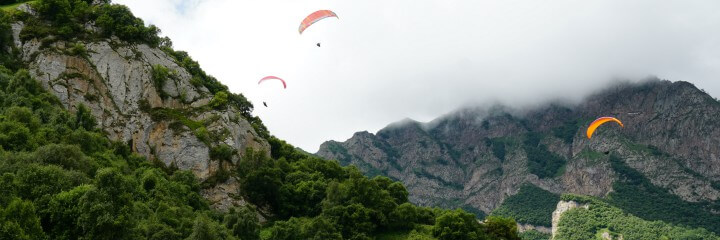
6) North Ossetia – Right in the center of the Caucasus Mountains, capital city Vladikavkaz has breathtaking views of the surrounding mountain range on a clear day. Like Kabardino-Balkaria, North Ossetia has incredible mountain gorges full of beautiful historic sites. North Ossetia is the only republic where Islam is not the majority religion; instead, the Ossetians have their own traditional religion as well as a strong presence of Orthodox Christianity. The only road from Russia to Georgia goes through North Ossetia, a breathtaking mountain pass not for the faint of heart!
7) Ingushetia – The smallest republic in the North Caucasus, Ingushetia is also called “the land of towers”. Its inhabitants lived in tower complexes in the mountains for centuries, and to see the towers now is like journeying back in time to another world. The towers are one of several “must-see” destinations located in Russia’s “border zone”, hugging the country’s southern border, which requires foreigners to get a special permit in advance to visit. Find a local tour operator to secure this pass for you, because it’s well worth your time!
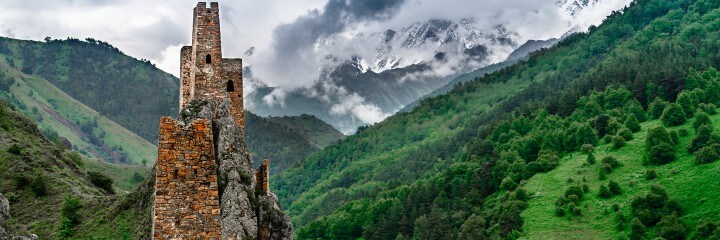
8) Chechnya – Although most people know Chechnya as the home to wars in the 1990s and early 2000s, it is a beautiful place with very hospitable people. The capital city Grozny has been completely rebuilt and is home to the Heart of Chechnya mosque, one of the largest mosques in Europe. Chechnya and Ingushetia are the most conservative republics in the North Caucasus, so they “feel” very different from their neighbors (and the rest of Russia), but this coupled with overwhelming hospitality towards guests makes for a very memorable experience.
9) Dagestan – Dagestan is a fascinating republic, with more than 30 distinct languages spoken there. Dagestan is home to one of Russia’s oldest cities, Derbent, and borders the Caspian Sea. You may have heard of 2018 UFC/MMA lightweight champion of the world Khabib Nurmagomedov, who proudly hails from Dagestan. Many of Dagestan’s inhabitants still live in remote mountain valleys today, where their culture and languages are strongly preserved. Dagestan is also known for its rich variety of artisan handicrafts, such as carpets, pottery, and knives.
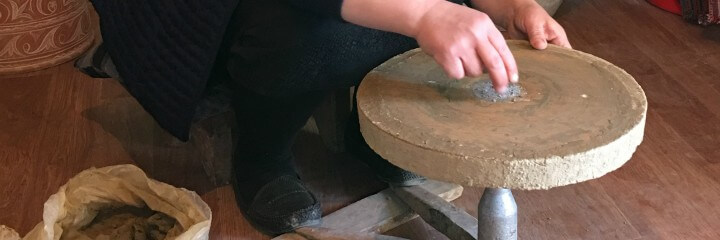
So, could you at least find the North Caucasus on a map now? 🙂
2. MOUNTAINS EVERYWHERE
Of course, the first thing you notice traveling through the North Caucasus are the majestic mountains. They connect each republic physically, but also form a large part of the local people’s identity.
If you have even an inkling of interest in mountains, you’ll find plenty to see and do in the North Caucasus:
1) Waterfalls & lakes – Because of the large number of glaciers in the highest parts of the mountain range, each spring, summer, and fall, the Caucasus landscape is replete with flowing waterfalls and beautiful lakes. You have to check out at least SOME of these! Our top recommendations include:
a) Midagrabin Falls in North Ossetia – The waterfall at the highest elevation in Europe, at over 3,000 meters above sea level.
b) Gizhdgit, or Bilim Lake, in Kabardino-Balkaria – Just a short 20-minute detour off the main road to Mt. Elbrus, this lake is incredible to behold both from above and at water level, surrounded by rising rock faces with clouds dancing around them.
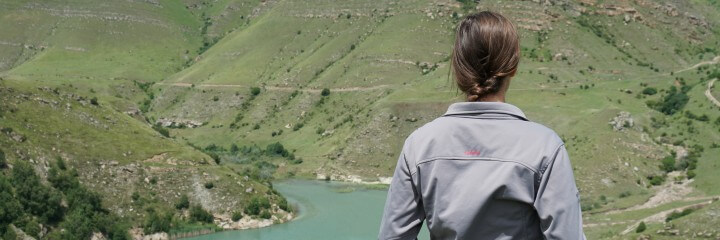
c) Emperor’s Lakes in Karachay-Cherkessia – This row of multiple mountain lakes are amazing to view all together, when all you can see for miles around is the never-ending Caucasus range. They make up just a few of 130 mountain lakes in this beautiful republic!
2) Adventure Sports! – The North Caucasus is without a doubt Russia’s hub for both winter and summer adventure sports.
a) Winter & Spring – skiing and snowboarding opportunities abound in every North Caucasus republic. For the most extreme, heli-skiing and backcountry skiing is available. For beginners, check out the gentler slopes at Arkhyz, and for the more advanced, the majestic slopes of Sochi, Elbrus and Dombay await! Sochi has been called Eastern Europe’s most developed and challenging slopes (insert link here), and you’ll be surprised at how many Russians pack the Caucasus slopes every January-April!
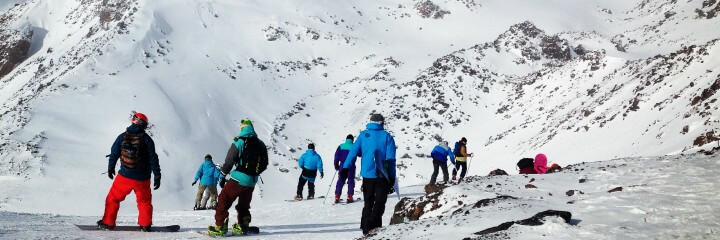
b) Summer, Fall – Once the weather warms up, take your pick of beautiful locations to go 4-wheeling, trekking, camping, rock climbing, or mountain biking. Mt. Elbrus is a must for mountain climbers from around the world.
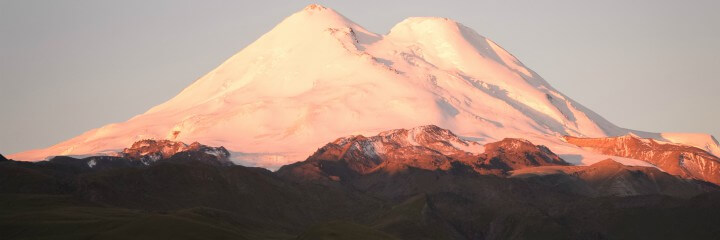
The Chegem Valley in Kabardino-Balkaria is home to breathtaking paragliding opportunities. For the most extreme, there are base-jumping opportunities in Ingushetia. Horse-riding tours are available for any number of hours or even days, on the famous local breeds of Kabardian and Karachai horses. What really makes these adventure opportunities in the mountains unique, are the cultural and historical landmarks you’ll come across along the way, where the Caucasus peoples have lived (and still live!) for many centuries.
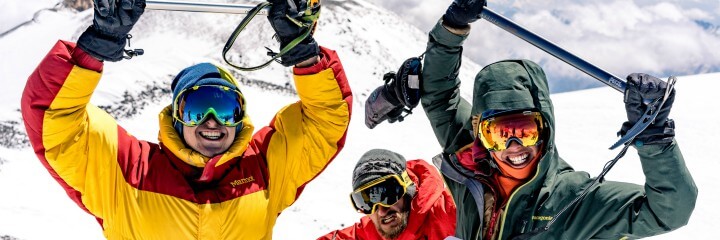
3) CULTURE & HISTORY ABOUND
The North Caucasus region is rich in unique cultural experiences and history that most foreigners are unaware of. There are three basic categories we could break this down into:
a) Ancient history – For most of the North Caucasus’ history, the land and local peoples were not a part of Russia proper (up to the 19th century). This means you’ll encounter different religions in the North Caucasus, from Islam, to Christianity, to even the pagan beliefs of the Ossetian people. The Caucasus peoples have fought off attempts at invasion throughout history, from the Mongols to the Ottoman Empire, and so towers, fortresses, and the like are still standing today. You may never see as many 500-1,000 year old structures in your life as you’ll see in the North Caucasus!
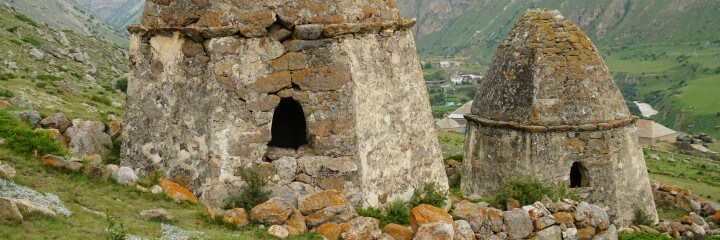
b) Languages – There are conservatively over 35 different languages spoken in the North Caucasus. Although Russian is the primary language spoken in schools and society, many Caucasus families speak their native language at home: Chechen, Avar, Kabardin, Balkar, etc. While several of the local languages have ties to larger language families such as Turkic or Indo-European, many of the languages are native to the Caucasus region, such as the Vainakh (Chechen & Ingush) and Dagestani family of languages (over 30 unique languages!). Dagestan is called by some a “linguist’s paradise.”
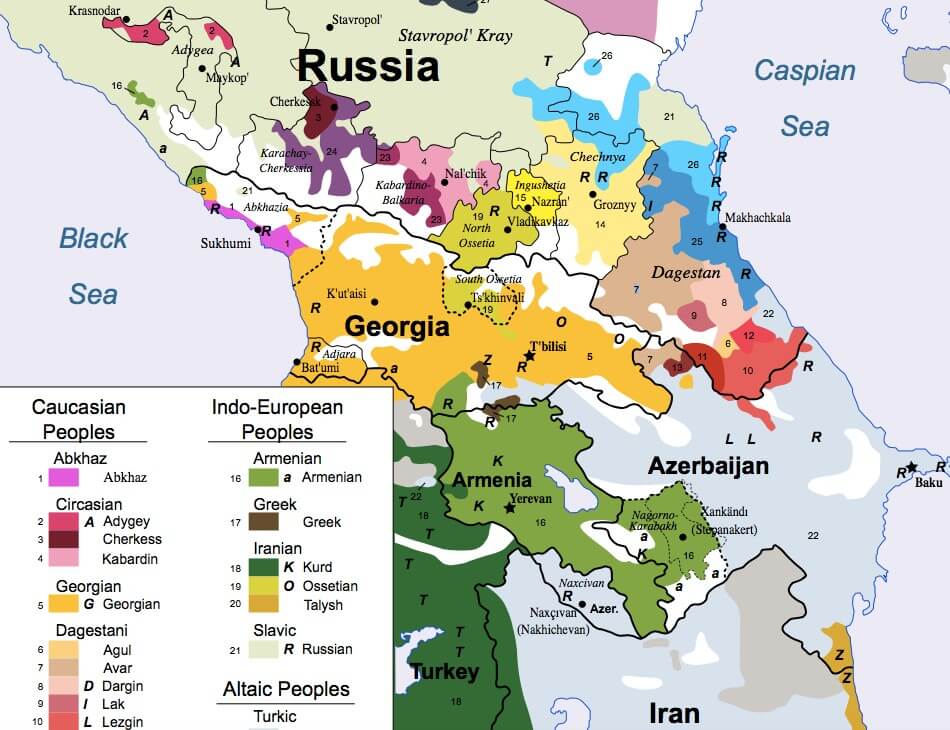
See: Languages of the Caucasus
If you are a Russian speaker, you may even recognize some of the different accents which local peoples speak Russian with.
c) Food & Dance – While there is overlap in some of the food dishes with traditional Russian cuisine, Caucasus food is very distinct in its presentation: the famous “shashlik” (meat shish kabobs), dumpling dishes, and many variations of stuffed breads abound all throughout the North Caucasus.
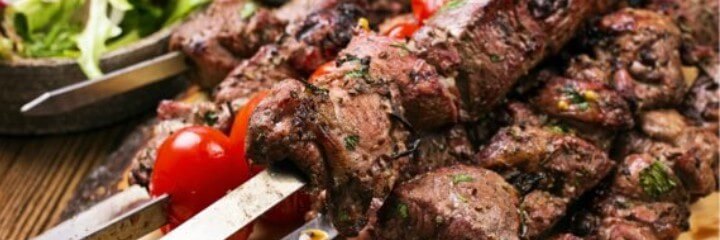
More than one traveler has said, “The only danger traveling there is over-eating!” If you have the privilege of being a guest in a Caucasus home, you’ll quickly find out that despite your best efforts, you’ll never be able to make a dent in the feast set before you!

The North Caucasus is also home to one of the world’s most unique, but unknown, national dances, the Lezginka. You’ll be mesmerized as you watch this “courting”, or “battle”, dance take place, with men strutting around the dance floor confidently like eagles, and the women gliding gracefully among them like swans. Beware, though, if you attend a wedding or special gathering, you’re for sure to be ushered to the dance floor to try your hand at the Lezginka, at which point you’ll find out firsthand that it’s harder than it looks!
4) HOSPITALITY – Possibly the most important thing to experience in the North Caucasus is the hospitality of local people.
Caucasus natives are famous for their warmth and care towards outsiders, whom they believe whole-heartedly are “sent from God as guests.” It is not uncommon in a more remote part of the mountains to come across a local person who without hesitation (or asking your opinion!) will usher you into his/her home for tea, which can quickly turn into a full-blown 3-course meal. 🙂
Caucasus people consider it an honor to have guests in their home, which is why many of them have huge courtyards to make room for 30,40,50+ guests for celebrations and gatherings. Plan to eat at least 3 full plates of food and still be scolded by your host for not eating anything. 🙂
Many Caucasus families will tell you of a common hospitality tradition, that if a stranger knocks on your door, you are obliged to take care of them with your very best for three days without ever asking where they came from or what they need. Then, after 3 days, the host can ask their guest if there is something they need help with. In ancient times, Caucasus families were required to abide by this tradition even if their enemy showed up at their door. Try it and let us know how it goes! 🙂
We believe this is the most important thing to experience in the North Caucasus. Because when you are a guest in someone else’s home, all stereotypes and preconceived notions melt away, and people are able to connect on a heartfelt level across the table from one another. It’s at the dinner table that one can truly experience the North Caucasus.
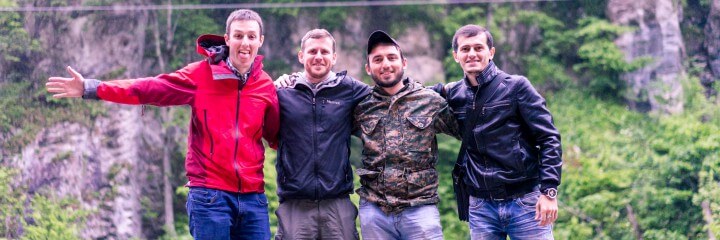
5) SAFETY – This is the #1 question people ask about the North Caucasus: “Is it safe?”
It’s important to think about the safety of the North Caucasus in present tense, 2019, not in past tense, such as the 1990s during the Chechen Wars. If we do that, then yes, we can make a resounding case for its safety as a travel destination.
The North Caucasus tourism infrastructure is being heavily invested in by Russia at the federal level, as the nation’s top ski resorts are in the North Caucasus, with more planned to be operational by 2025. Mt. Elbrus is Europe’s highest mountain peak, and is summited by thousands of foreigners every year. One thing to note is that the North Caucasus has historically been very popular with Russian tourists, dating back to the 19th century, when many traveled here for month-long health treatments from the local mineral waters.
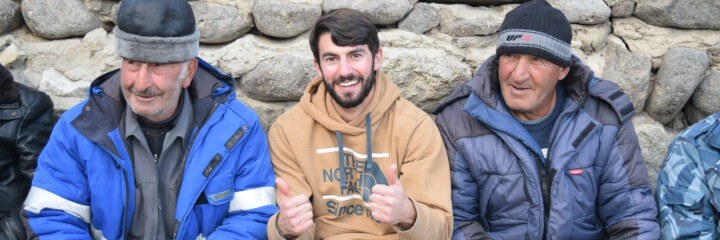
One thing you will notice driving from one beautiful Caucasus destination to another, is there are regular security “checkpoints” along the main roads. While these could be viewed by some as an annoyance, they are actually a sign of Russia’s desire to ensure the North Caucasus is secure, and are a reason why more and more international tourists are visiting the region.
Another thing to remember is that the North Caucasus is a part of Russia, a traditionally Orthodox Christian nation. While the majority of North Caucasus inhabitants are of Muslim background, most Russian Christians and Caucasus Muslims have lived peacefully as neighbors for many years now.
Here are some eye-popping statistics on TripAdvisor from two of the top tourist destinations in the North Caucasus:
1) Mt. Elbrus – #1 reviewed sightseeing and mountain climbing destination (for all North Caucasus republics) on TripAdvisor – 286 reviews, 5.0 rating, 87% Excellent ratings, 10% Very Good ratings – View rating/reviews here
2) “Heart of Chechnya” mosque in Grozny, Chechnya – #3 reviewed sightseeing destination (for all North Caucasus republics) on TripAdvisor – 248 reviews, 5.0 rating, 90% Excellent ratings, 9% Very Good ratings – View rating/reviews here
So, are you ready to come yet? 🙂 We hope this was a helpful start to your understanding more about the beautiful and mysterious North Caucasus Mountains.
Start packing your bags now, because, as the local people would say, “We’re waiting for you!”
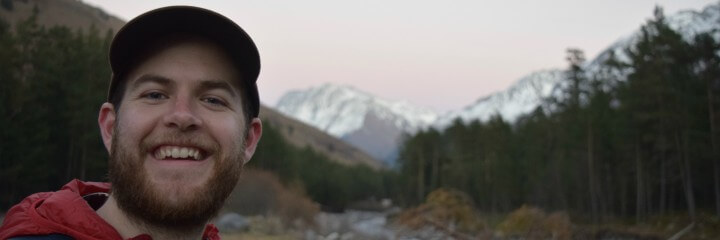
Additional Resources: The podcast CaucasTalk was created by the Director of Beyond Red Square, Andrew Slate, an American living in the North Caucasus, to help English-speakers better understand the culture, history, and tourism opportunities in this beautiful land. Search “CaucasTalk” on any podcast app, or check out our Facebook page by the same name. Have a listen!

